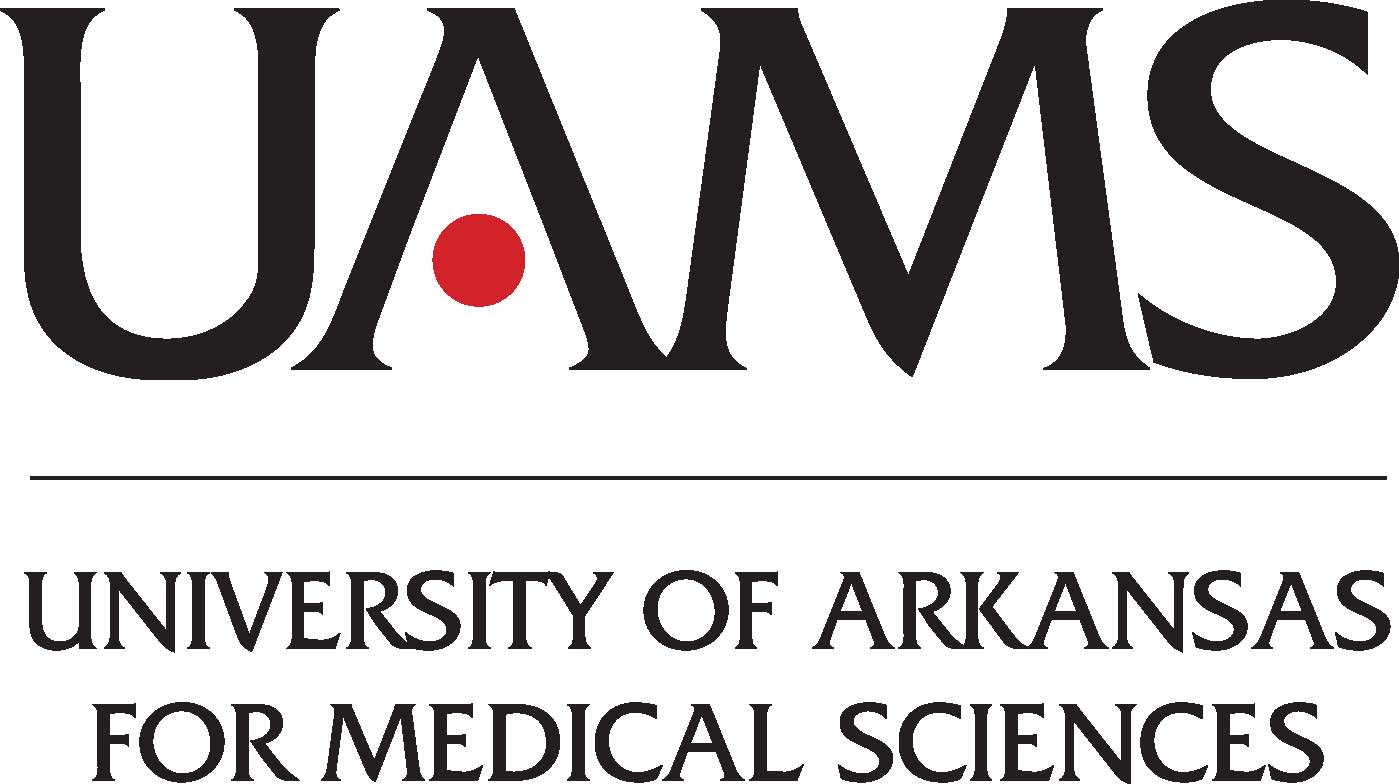Combination Chemotherapy, Radiation Therapy, and Bevacizumab in Treating Patients With Newly Diagnosed Stage III Non-small Cell Lung Cancer That Cannot Be Removed by Surgery
| Status: | Active, not recruiting |
|---|---|
| Conditions: | Lung Cancer, Lung Cancer, Cancer, Cancer, Cancer, Cancer |
| Therapuetic Areas: | Oncology |
| Healthy: | No |
| Age Range: | 18 - Any |
| Updated: | 4/5/2019 |
| Start Date: | June 15, 2006 |
A Pilot Trial of Cisplatin/Etoposide/Radiotherapy Followed by Consolidation Docetaxel and the Addition of Bevacizumab (NSC-704865) in Three Cohorts of Patients With Inoperable Locally Advanced Stage III Non-small Cell Lung Cancer
This clinical trial studies combination chemotherapy, radiation therapy, and bevacizumab in
treating patients with newly diagnosed stage III non-small cell lung cancer that cannot be
removed by surgery. Drugs used in chemotherapy, such as cisplatin, etoposide, and docetaxel,
work in different ways to stop the growth of [cancer/tumor] cells, either by killing the
cells, by stopping them from dividing, or by stopping them from spreading. Radiation therapy
uses high-energy x-rays to kill tumor cells. Monoclonal antibodies, such as bevacizumab, may
interfere with the ability of tumor cells to grow and spread. Bevacizumab may also stop the
growth of tumor cells by blocking blood flow to the tumor. Giving more than one drug
(combination chemotherapy) together with radiation therapy and bevacizumab may kill more
tumor cells.
treating patients with newly diagnosed stage III non-small cell lung cancer that cannot be
removed by surgery. Drugs used in chemotherapy, such as cisplatin, etoposide, and docetaxel,
work in different ways to stop the growth of [cancer/tumor] cells, either by killing the
cells, by stopping them from dividing, or by stopping them from spreading. Radiation therapy
uses high-energy x-rays to kill tumor cells. Monoclonal antibodies, such as bevacizumab, may
interfere with the ability of tumor cells to grow and spread. Bevacizumab may also stop the
growth of tumor cells by blocking blood flow to the tumor. Giving more than one drug
(combination chemotherapy) together with radiation therapy and bevacizumab may kill more
tumor cells.
PRIMARY OBJECTIVES:
I. Determine the frequency and severity of toxic effects of induction therapy comprising
cisplatin, etoposide, and radiotherapy with or without bevacizumab followed by consolidation
therapy comprising docetaxel and bevacizumab, in terms of grade 4 or 5 hemorrhage, in
patients with newly diagnosed, unresectable, stage III non-small cell lung cancer.
SECONDARY OBJECTIVES:
I. Determine progression-free and overall survival of patients treated with these regimens.
II. Determine response (confirmed, unconfirmed, partial, and complete) in patients with
measurable disease treated with these regimens.
OUTLINE: This is a pilot, multicenter study. Patients are stratified according to risk (high*
vs low).
NOTE: *High-risk stratum closed to accrual as of 2/20/09.
INDUCTION THERAPY: Patients in each stratum are assigned to 1 of 3 sequential treatment
groups.
GROUP 1: Patients receive cisplatin intravenously (IV) over 1 hour on days 1, 8, 29, and 36
and etoposide IV over 1 hour on days 1-5 and 29-33. Patients undergo concurrent thoracic
radiotherapy once daily on days 1-5, 8-12, 15-19, 22-26, 29-33, 36-40, and 43-47.
GROUP 2: Patients receive cisplatin, etoposide, and thoracic radiotherapy as in group 1.
Patients also receive bevacizumab IV over 30-90 minutes on days 15, 36, and 57.
GROUP 3: Patients receive cisplatin, etoposide, and thoracic radiotherapy as in group 1.
Patients also receive bevacizumab IV over 30-90 minutes on days 1, 22, and 43.
CONSOLIDATION CHEMOTHERAPY: Beginning 3-6 weeks after completion of induction therapy, all
patients receive consolidation chemotherapy comprising docetaxel IV over 1 hour and
bevacizumab IV over 30-90 minutes on day 1. Patients also receive filgrastim (G-CSF)
subcutaneously (SC) beginning on day 2 and continuing until blood counts recover OR
pegfilgrastim SC once on day 2.
Treatment repeats every 21 days for 3 courses in the absence of disease progression or
unacceptable toxicity. After completion of study treatment, patients are followed
periodically for up to 4 years.
I. Determine the frequency and severity of toxic effects of induction therapy comprising
cisplatin, etoposide, and radiotherapy with or without bevacizumab followed by consolidation
therapy comprising docetaxel and bevacizumab, in terms of grade 4 or 5 hemorrhage, in
patients with newly diagnosed, unresectable, stage III non-small cell lung cancer.
SECONDARY OBJECTIVES:
I. Determine progression-free and overall survival of patients treated with these regimens.
II. Determine response (confirmed, unconfirmed, partial, and complete) in patients with
measurable disease treated with these regimens.
OUTLINE: This is a pilot, multicenter study. Patients are stratified according to risk (high*
vs low).
NOTE: *High-risk stratum closed to accrual as of 2/20/09.
INDUCTION THERAPY: Patients in each stratum are assigned to 1 of 3 sequential treatment
groups.
GROUP 1: Patients receive cisplatin intravenously (IV) over 1 hour on days 1, 8, 29, and 36
and etoposide IV over 1 hour on days 1-5 and 29-33. Patients undergo concurrent thoracic
radiotherapy once daily on days 1-5, 8-12, 15-19, 22-26, 29-33, 36-40, and 43-47.
GROUP 2: Patients receive cisplatin, etoposide, and thoracic radiotherapy as in group 1.
Patients also receive bevacizumab IV over 30-90 minutes on days 15, 36, and 57.
GROUP 3: Patients receive cisplatin, etoposide, and thoracic radiotherapy as in group 1.
Patients also receive bevacizumab IV over 30-90 minutes on days 1, 22, and 43.
CONSOLIDATION CHEMOTHERAPY: Beginning 3-6 weeks after completion of induction therapy, all
patients receive consolidation chemotherapy comprising docetaxel IV over 1 hour and
bevacizumab IV over 30-90 minutes on day 1. Patients also receive filgrastim (G-CSF)
subcutaneously (SC) beginning on day 2 and continuing until blood counts recover OR
pegfilgrastim SC once on day 2.
Treatment repeats every 21 days for 3 courses in the absence of disease progression or
unacceptable toxicity. After completion of study treatment, patients are followed
periodically for up to 4 years.
Inclusion Criteria:
- Histologically or cytologically confirmed single, primary, bronchogenic, non-small
cell lung cancer (NSCLC)
- Newly diagnosed disease
- Unresectable disease
- No more than 1 parenchymal lesions on same or opposite sides of the lungs
- Meets 1 of the following stage criteria:
- Stage IIIA (N2) disease meeting the following criteria:
- N2 mediastinal lymph nodes must be multiple and/or bulky on CT scan or x-ray
so that the patient is not a candidate for induction chemotherapy or
chemoradiotherapy followed by surgical resection
- N2 status must be documented by ≥ 1 of the following methods:
- Histologically or cytologically confirmed N2 disease by exploratory
thoracotomy, thoracoscopy, mediastinoscopy, mediastinotomy, Chamberlain
procedure, Wang needle biopsy (WNB), fine needle aspiration (FNA) under
bronchoscopic or CT guidance, or any other method
- Node positive by fludeoxyglucose-positron emission tomography (FDG-PET)
scan
- Nodes > 3 cm on CT scan
- Paralyzed left true vocal cord with separate left lung primary distinct
from anterior-posterior window nodes on CT scan
- Stage IIIB disease meeting ≥ 1 of the following criteria:
- Histologically or radiographically confirmed positive N3 nodes*, documented
by ≥ 1 of the following methods:
- FNA, core needle biopsy (CNB), or excisional biopsy of supraclavicular
N3 nodes
- Biopsy of contralateral mediastinal N3 nodes by mediastinoscopy,
mediastinotomy, or thoracotomy
- FNA, CNB, or WNB under CT or bronchoscopic fluoroscopic guidance of
enlarged contralateral N3 mediastinal nodes
- Contralateral mediastinal nodes > 3 cm on CT scan
- Node positivity by FDG-PET scan
- Right-sided primary with paralyzed left true vocal cord
- T4 lesions of any size that invade the mediastinum, heart, great vessels,
trachea, esophagus, vertebral body, or carina, documented by ≥ 1 of the
following methods:
- Written documentation of type of T4 extent if patient had a prior
exploratory thoracotomy or thoracoscopy
- T4 involvement of the trachea or carina by direct bronchoscopic
visualization
- T4 involvement of the heart, esophagus, aorta, or vertebral body by CT
scan, MRI, or transesophageal ultrasound
- T4 involvement of the mediastinum by CT scan or MRI if, in the absence
of the above organ involvement, there is soft tissue extension directly
into the mediastinal space**
- Meets 1 of the following risk criteria:
- Low risk disease, meeting the following criteria:
- Non-squamous cell NSCLC, including adenocarcinoma, bronchoalveolar cell
carcinoma, or large cell carcinoma
- If mixed histology, the squamous cell carcinoma component must be < 50%
- Histology or cytology from involved mediastinal or supraclavicular
lymph nodes allowed if a separate distal primary lesion is clearly
evident on radiographs (i.e., second biopsy not required)
- No primary tumor with cavitation and/or tumor within 1 cm of a major vessel
- No hemoptysis (i.e., bright red blood ≥ ½ teaspoon) in the past 28 days
- High-risk* disease, meeting ≥ 1 of the following criteria:
- Squamous cell NSCLC
- If mixed histology, the squamous cell component must be ≥ 50%
- Tumor with any histology that has cavitation or is located within 1 cm of a
major vessel
- No aortic involvement
- Any histology and hemoptysis (i.e., bright red blood ≥ ½ teaspoon) within
past 28 days
- Measurable or nonmeasurable disease by CT scan or MRI
- Pleural effusions, ascites, and laboratory parameters are not acceptable as the
only evidence of disease
- No pleural effusion except for small pleural effusion visible on CT scan or MRI alone
- No pericardial effusions
- No metastatic disease involving the contralateral chest, liver, or adrenals confirmed
by CT scan of the upper abdomen or by chest CT scan with complete liver and adrenals
in the report
- Patients must be offered participation in SWOG-S9925 (Lung Cancer Specimen Repository
Protocol)
- No brain metastases by CT scan or MRI
- No evidence of cavitation
- Creatinine normal
- Creatinine clearance ≥ 50 mL/min
- FEV_1 ≥ 2.0 liters OR predicted FEV_1 of the contralateral lung > 800 mL
- Absolute neutrophil count ≥ 1,500/mm^3
- Platelet count ≥ 100,000/mm^3
- Urine protein: creatinine ratio ≤ 0.5 by urinalysis OR urine protein < 1,000 mg by
24-hour urine collection
- INR < 1.5
- Zubrod performance status 0-1
- No sensory neuropathy > grade 1
- No cerebrovascular accident within the past 6 months
- No myocardial infarction or unstable angina within the past 6 months
- No uncontrolled hypertension
- No New York Heart Association class II-IV congestive heart failure
- No serious cardiac arrhythmia requiring medication
- No clinically significant peripheral vascular disease
- No evidence of bleeding diathesis or coagulopathy
- No pathologic condition other than lung cancer that carries a high risk of bleeding
- No known hypersensitivity to Chinese hamster ovary cell products or other recombinant
human antibodies
- No serious, nonhealing wound, ulcer, or bone fracture
- No other prior malignancy except adequately treated basal cell or squamous cell skin
cancer, in situ cervical cancer, adequately treated stage I or II cancer for which the
patient is currently in complete remission, or other cancer for which the patient has
been disease-free for 5 years
- Not pregnant or nursing
- No nursing during and for ≥ 6 months after the last dose of bevacizumab
- Negative pregnancy test
- Fertile patients must use effective contraception during and for ≥ 6 months after the
last dose of bevacizumab
- Must have pre-treatment simulation demonstrating a V20 ≤ 35% with planned radiation
dose of 6,480 cGy
- No prior surgical resection
- Prior exploratory thoracotomy, mediastinoscopy, excisional biopsy, or similar
surgery allowed for diagnosing, staging, or determining potential resectability
of lung tumor
- No prior chemotherapy or radiotherapy for lung cancer
- No prior radiotherapy to the neck or thorax
- At least 4 weeks since prior thoracic or other major surgery (excluding
mediastinoscopy) and recovered
- More than 7 days since prior FNA, CNB, or mediastinoscopy
- No other concurrent anticancer therapy, including chemotherapy, radiotherapy, or
biologic agents
- No other concurrent investigational drugs
- No concurrent major surgical procedures
- No concurrent full-dose anticoagulants (e.g., low-molecular weight and unfractionated
heparin or warfarin)
- Low-dose warfarin (i.e., 1 mg) is allowed to prevent clotting of an infusaport or
central line
- No concurrent brachytherapy, radiopharmaceuticals, high linear energy transfer
radiation (i.e., fast neutrons), particle therapy (i.e., protons, carbon, or helium),
and/or altered fractionation schemes
- No concurrent intensity-modulated radiotherapy
- No concurrent prophylactic contralateral hilar or supraclavicular lymph node
radiotherapy
We found this trial at
62
sites
Click here to add this to my saved trials
University of Mississippi Medical Center The University of Mississippi Medical Center, located in Jackson, is...
Click here to add this to my saved trials
Click here to add this to my saved trials
529 West Markham Street
Little Rock, Arkansas 72205
Little Rock, Arkansas 72205
(501) 686-7000

University of Arkansas for Medical Sciences The University of Arkansas for Medical Sciences (UAMS) in...
Click here to add this to my saved trials
3181 Southwest Sam Jackson Park Road
Portland, Oregon 97239
Portland, Oregon 97239
503 494-8311

Oregon Health and Science University In 1887, the inaugural class of the University of Oregon...
Click here to add this to my saved trials
University of Rochester The University of Rochester is one of the country's top-tier research universities....
Click here to add this to my saved trials
4502 Medical Drive
San Antonio, Texas 78284
San Antonio, Texas 78284
(210) 567-7000

University of Texas Health Science Center at San Antonio The University of Texas Health Science...
Click here to add this to my saved trials
Click here to add this to my saved trials
Click here to add this to my saved trials
University of Colorado Hospital, Site Top medical professionals, superior medicine and progressive change make University...
Click here to add this to my saved trials
Click here to add this to my saved trials
Click here to add this to my saved trials
Click here to add this to my saved trials
Click here to add this to my saved trials
Click here to add this to my saved trials
Click here to add this to my saved trials
Danville Regional Medical Center For more than 120 years, Danville Regional Medical Center has been...
Click here to add this to my saved trials
Denver Health Medical Center Denver Health is a comprehensive, integrated organization providing level one care...
Click here to add this to my saved trials
Click here to add this to my saved trials
4160 John R St #2122
Detroit, Michigan 48201
Detroit, Michigan 48201
(313) 833-1785

Wayne State University/Karmanos Cancer Institute Karmanos is based in southeast Michigan, in midtown Detroit, and...
Click here to add this to my saved trials
Click here to add this to my saved trials
Click here to add this to my saved trials
Click here to add this to my saved trials
Click here to add this to my saved trials
1117 29th St S
Great Falls, Montana 59405
Great Falls, Montana 59405
(406) 771-7300

Benefis Healthcare- Sletten Cancer Institute Benefis Hospitals has 516 beds at its two campuses (that...
Click here to add this to my saved trials
Hays Medical Center Hays Medical Center is a private, not-for-profit hospital formed by the 1991...
Click here to add this to my saved trials
Click here to add this to my saved trials
Click here to add this to my saved trials
Click here to add this to my saved trials
Click here to add this to my saved trials
Click here to add this to my saved trials
Click here to add this to my saved trials
Click here to add this to my saved trials
1441 Eastlake Ave
Los Angeles, California 90033
Los Angeles, California 90033
(323) 865-3000

U.S.C./Norris Comprehensive Cancer Center The USC Norris Comprehensive Cancer Center, located in Los Angeles, is...
Click here to add this to my saved trials
Click here to add this to my saved trials
Loyola University Medical Center Loyola University Health System is committed to excellence in patient care...
Click here to add this to my saved trials
Click here to add this to my saved trials
Click here to add this to my saved trials
Click here to add this to my saved trials
Click here to add this to my saved trials
Click here to add this to my saved trials
Click here to add this to my saved trials
Click here to add this to my saved trials
Click here to add this to my saved trials
Click here to add this to my saved trials
Click here to add this to my saved trials
Click here to add this to my saved trials
Click here to add this to my saved trials
Click here to add this to my saved trials
Click here to add this to my saved trials
Click here to add this to my saved trials
Click here to add this to my saved trials
Click here to add this to my saved trials
Click here to add this to my saved trials
Click here to add this to my saved trials
Highland Clinic In 1917, Highland Clinic Sanitarium opened its doors at 1006 Highland Avenue in...
Click here to add this to my saved trials
Click here to add this to my saved trials
Saint Joseph Medical Center St. Joseph Medical Center is a 361-bed regional medical center that...
Click here to add this to my saved trials
Click here to add this to my saved trials
Click here to add this to my saved trials
Click here to add this to my saved trials
Click here to add this to my saved trials







